Events
| Name | organizer | Where |
|---|---|---|
| MBCC “Doing Business with Mongolia seminar and Christmas Receptiom” Dec 10. 2025 London UK | MBCCI | London UK Goodman LLC |
NEWS

Centerra Gold to launch arbitration against Kyrgyzstan over Kumtor mine www.mining.com
Canada’s Centerra Gold (TSX: CG) initiated binding arbitration against the Government of the Kyrgyz Republic in a legal skirmish related to the company’s Kumtor mine.
In early May, lawmakers in Kyrgyzstan passed a bill allowing the state to seize Kumtor for up to three months. The decision was made under the argument that the mine – the largest gold operation in the Central Asian nation – may pose danger to locals and the environment.
SIGN UP FOR THE PRECIOUS METALS DIGEST
A few days later, on May 9, 2021, a district court imposed a $3.1 billion fine on Kumtor Gold Company, which is Centerra’s local unit in charge of running its namesake operation and which was found to have breached environmental laws by placing waste rock on glaciers, according to private civil environmental claims.
The Kyrgyz government also put before the court a series of tax claims that say that the Toronto-based miner owes more than $170 million. This, after the state Tax Service revived previously dismissed claims against Centerra.
The company, on the other hand, insists on the dismissal of such claims based on a number of agreements that were signed in 2009, which contained a specific tax and fiscal regime that contemplated that no taxes were payable by Kumtor Gold on intercompany transactions with Centerra, including dividends.
However, since Kyrgyzstan has insisted on its position, Centerra said it will seek to enjoin the government from taking further steps to implement the legislation to take over the mine or to pursue the fines and tax claims against the Kumtor Gold.
The Toronto-based miner said all of these recent measures violate the government’s investment agreements with respect to the Kumtor mine.
Centerra’s position
“The leadership of the Kyrgyz Republic has acted with astonishing speed since the beginning of this year to undermine the basis on which the Kumtor mine has been operated and has refused to engage with us on any matters it considers to be the subject of dispute,” Scott Perry, Centerra’s president and CEO, said in a media statement. ”The government’s actions have left Centerra no choice but to exercise our legal rights, through the pursuit of arbitration and otherwise, to protect the interests of KGC, Centerra and our shareholders. In the event the government wishes to engage in a constructive dialogue, we remain willing and available to do so.”
In the brief, Perry also says that the Kyrgyz Republic State Commission and other Kyrgyz Republic state and law enforcement authorities have been applying intimidation tactics against KGC’s personnel by performing police visits to the homes of several senior managers and a raid of KGC’s office in Bishkek on May 15.
IF BOTH PARTIES DON’T AGREE ON AN ARBITRATOR WITHIN 28 DAYS, CENTERRA WILL ASK THE PERMANENT COURT OF ARBITRATION AT THE HAGUE TO APPOINT AN ARBITRATOR
“This and other recent conduct by the government undermines the fundamental investment protections guaranteed to Centerra and its Kyrgyz Republic subsidiaries under the 2009 Restated Project Agreements governing the Kumtor Mine,” the release states. “Under the 2009 Restated Investment Agreement and the 2017 Strategic Agreement on Environmental Protection and Investment Promotion, Centerra’s claims will be adjudicated by a single arbitrator in arbitration proceedings to be held at Stockholm, Sweden and conducted under the rules of the United Nations Commission on International Trade Law. The parties have 28 days during which to agree on an arbitrator, failing which Centerra will ask the Permanent Court of Arbitration at The Hague to appoint an arbitrator. Under the agreements, the governing law is the law of the State of New York.”
The company’s brief also says that no assurances can be given that any of the current or future legal claims and other disputes that have arisen in relation to KGC or the Kumtor mine can be resolved without a material impact or potentially the loss of Centerra’s entire investment in the mine.
Kumtor produced more than 13.2 million ounces of gold between 1997 and the end of 2020. Last year’s output was slightly over 556,000 ounces and, based on Centerra’s numbers, the mine is the largest private-sector employer and taxpayer in the Kyrgyz Republic and the largest foreign investment in the country, having contributed 12.5% of Kyrgyz GDP in 2020.
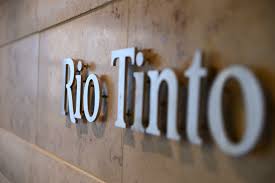
BHP, Vale, Rio launch challenge to encourage haul truck electrification www.mining.com
Three resource giants, BHP (ASX, LON, NYSE: BHP), Rio Tinto (ASX, LON, NYSE: RIO), and Vale (NYSE: VALE), launched today the Charge On Innovation Challenge, a global competition for technology innovators to develop new concepts for large-scale haul truck electrification systems with the main goal of cutting emissions from surface mining operations.
In partnership with Australia’s mining equipment, technology and services industry body Austmine, this initiative is also expected to generate solutions that are capable of unlocking safety, productivity, and operational improvements.
According to the challenge’s founding patrons, current stationary charging systems require substantial time to charge large trucks, which results in significant lost productivity. Thus, the mining industry needs multi-megawatt scale fast charging concepts capable of delivering around 400kWh to charge and propel a truck within the truck’s haul cycle, which includes load, travel, dump, return, and queue.
The three companies believe it is possible to even reformulate existing diesel-electric equipment so that the implementation of longer-term solutions can be fast-tracked.
“The mining industry needs to be at the forefront of tackling the climate challenge. The Charge On Innovation Challenge is a great example of the current collaborative work being done by the mining industry and mobile equipment manufacturers to decarbonise mining fleets,” the fIrms said in a media statement. “In addition to providing a zero-carbon energy source, the conversion of mobile mining equipment to battery-electric can potentially unlock value, as electric motors have fewer moving parts when compared to standard equipment.”
BHP, Rio and Vale also said that they are convinced that a solution will be found to be able to deliver electricity to trucks in the complex operating environment of a large surface mine.
“We expect the Challenge will attract companies from a broad range of sectors including mining, automotive, aerospace, agriculture, and defence to deliver selected charging concepts to create a standard product that can interface with all trucks,” Austmine CEO Christine Gibbs Stewart said in the brief.
The three miners involved in the challenge are the world’s largest producers of iron ore. According to a recent report, energy intensity at hematite operation averages 0.15 GJ/t of iron ore, taking into account both diesel consumption in the mine and electricity production for processing plants.
In magnetite operations, on the other hand, total energy intensity from mining, processing and shipping adds up to 0.3 GJ/t of shipped ore.
Approximately 90% of the energy consumption was determined to be diesel consumption in mobile equipment.
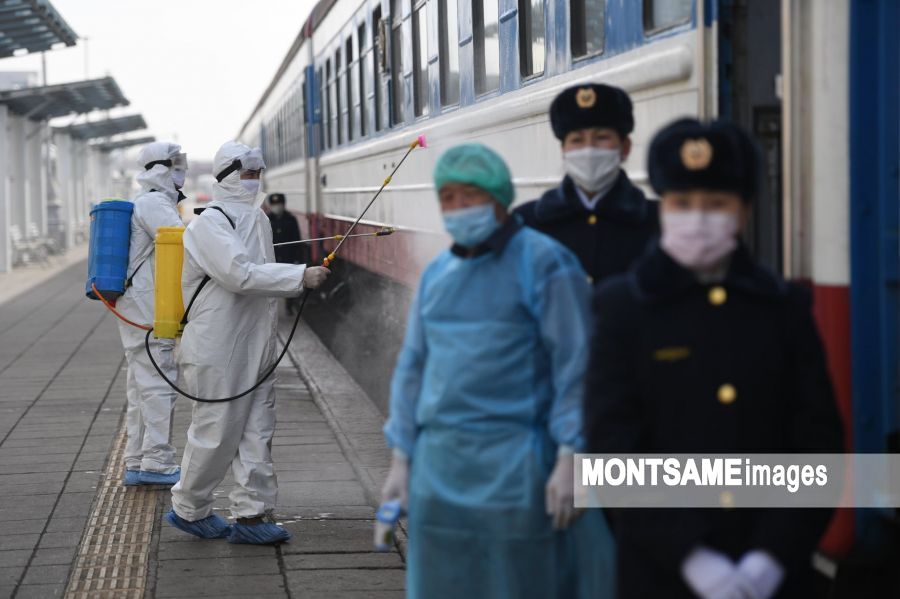
Mongolia logs 585 new COVID-19 cases, 9 more deaths www.xinhuanet.com
Mongolia confirmed 585 new COVID-19 infections over the past 24 hours, raising its national caseload to 47,033, the country's health ministry said Thursday.
One of the latest confirmed cases was imported from abroad, and the remaining ones were local infections, the ministry said in a statement.
In the past day, the country's COVID-19 death toll rose by nine to 205, while the number of recoveries grew by 1,548 to 37,281, said the ministry.
The country launched a mass COVID-19 vaccination campaign in late February, aiming to cover at least 60 percent of its population of 3.3 million.
A total of more than 1,712,500 Mongolians have so far received their first dose and over 634,600 have got both jabs.

From Canada to Mongolia several forests have grown back www.sustainability-times.com
Deforestation remains an acute problem across much of the world, but far from everywhere.
From Canada to Mongolia forests have regrown here and there in large patches covering an overall area the size of France, according to a new analysis by Trillion Trees, a joint venture between World Wildlife Fund (WWF), BirdLife International and the Wildlife Conservation Society (WCS).
One particular success story of regeneration involves Brazil’s Atlantic Forest, which is a hotspot of biodiversity with several endangered species of plants and animals that are found nowhere else on Earth. In this new century as much as 4.2 million hectares of forest has regrown there, adding an area the size of the Netherlands to local forests.
The regeneration has been thanks to “a combination of planned projects to restore the forest, more responsible industry practices and other factors, including migration trends toward cities,” says Trillion Trees, which has been mapping forest regeneration worldwide.
That does not mean, however, that forests in Brazil, including the Atlantic Forest, are out of the woods, so to speak. “Such is the extent of historic deforestation that the area of this unique forest still needs to more than double from currently 12% of its original extent to 30% in order to reach what scientists believe is a minimal threshold for its lasting conservation,” WWF explains.
Other forests elsewhere that have experienced large-scale regrowth include boreal forests in Mongolia’s northern wilderness where some 1.2 million hectares of trees have grown back in 20 years. There too regeneration has been due largely to ongoing conservation efforts.
Other regeneration global hotspots include boreal forests of Canada and biodiverse forests in Central Africa. In all, newly grown forests around the world could store the equivalent of 5.9 gigatons of CO2, which is more than the annual emissions of the United States, according to the nonprofit.
Yet even as some forests are growing back, others are being thinned and felled. Thus, the need for forest restoration and conservation projects is as acute as ever.
“Deforestation is at the center of our climate crisis, and we must do everything we can to halt it,” says Josefina Braña Varela, vice president and deputy lead for forests at WWF. “In addition, the restoration of our natural forests will play an essential role in preserving these critical ecosystems,” the expert adds.
“The [new] analysis provides a positive outlook for natural regeneration — but this growth doesn’t happen without careful planning, increased investment and strong policies in place that lead to an increase in forest cover,” she says.

PM L.Oyun-Erdene: The time has come for Mongolia to export value-added livestock products www.montsame.mn
On May 12, Prime Minister L.Oyun-Erdene became acquainted with the construction of the Darkhan hide and leather complex being built in Khongor soum, Darkhan-Uul aimag.
The construction project was launched on 18 hectares of land in 2018, with plans to establish 13 factories and plants that have the annual capacity to process 10 million pieces of hides, 10,000 tons of wool, and 1,000 tons of cashmere. By putting the complex into operation, about 7,500 job opportunities are estimated to be created.
As of today, the construction of the wool processing factory is at 86 percent, with substation at 95 percent, wastewater treatment plant at 80 percent, interior heating system at 50 percent, 3.9 km exterior heating system at 70 percent, foundation of the large cattle hides processing factory at 18 percent.
The Government has recently announced 100 projects of high priority. One of the projects is this particular complex that will process livestock commodities for the export of value-added products. Noting that the establishment of the complex will be comprehensively supported by the government, the Prime Minister highlighted that the time has come for Mongolia to diversify the livestock sector and export value-added products.
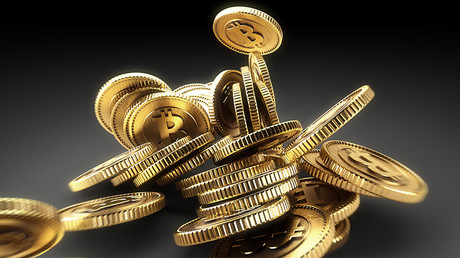
Binance P2P Supports New Payment Methods for Mongolia www.binance.com
Binance P2P has now added new payment methods for buying and selling crypto with Mongolian Tugrik (MNT). This allows users to trade cryptocurrencies with fiat via the following new payment methods:
LendMN
SuperUp
Mongol Chat
Users can add these payment methods through Account > Payment Methods > P2P Payment Methods. Please refer to the user guide for further details.
Please note that these payment methods are supported as options of fiat transactions between users, and Binance does not establish any business relationships with the entities listed above.
Disclaimer: Your use of the Binance P2P services and all information and other content (including that of third parties) included in or accessible from the Binance P2P services is at your sole risk. Our only responsibility is to handle your payment transaction. All payments are final upon completion unless otherwise required by law. Binance P2P platform has neither the rights nor the obligations to resolve any disputes arising from a completed payment. Neither Binance P2P platform nor merchants shall be responsible for your loss in a completed payment.
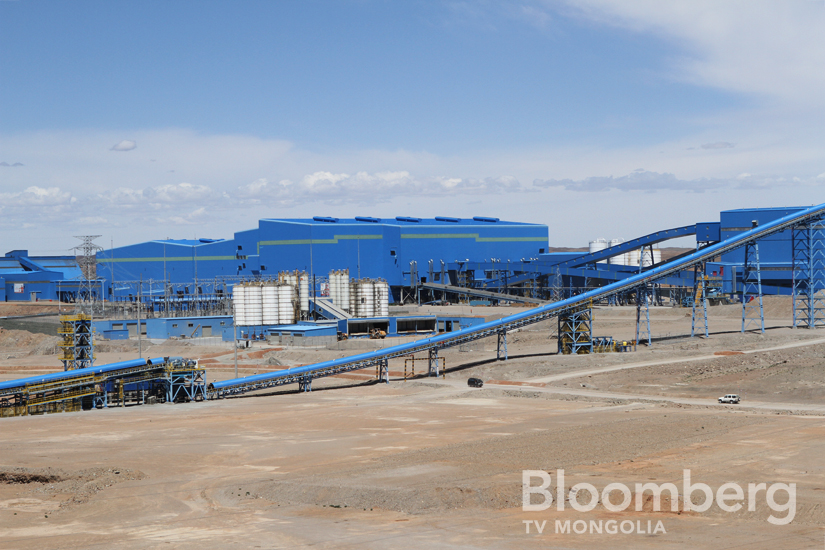
Virus may add $US1b to Rio’s Mongolian blowout www.afr.com
Rio Tinto’s Mongolian copper project could face a further $US1 billion ($1.28 billion) of cost blowouts on the back of the coronavirus delays, as brinksmanship with the Mongolian government extends to the supply of power to the project.
The cost and schedule for an underground expansion of the Oyu Tolgoi copper mine has already blown out by $US1.45 billion and 22 months, and the Rio subsidiary in charge of the mine hinted on Thursday that the pandemic was likely to add to those blowouts.
Turquoise Hill Resources, which is 50.79 per cent owned by Rio, said the accuracy range on the existing $US6.75 billion cost estimate had been expanded and the ultimate cost could be up to 15 per cent higher.
Previously, the accuracy range had suggested a maximum of 10 per cent above $US6.75 billion.
The project would cost $US7.76 billion if the 15 per cent range was fully utilised.
While the accuracy range also implies there is potential for the cost to be lower than $US6.75 billion, Turquoise Hill was clear that the risk was to the upside given delays to multiple aspects of the project.
Most importantly, a crucial mining move called the “undercut”, which triggers the controlled collapse of rock within the mining zone, appears increasingly unlikely to go ahead on schedule.
Rio executive Arnaud Soirat wrote a letter to the Mongolian government on Christmas Eve, when he was still Rio’s copper boss, saying the undercut decision would occur in May so long as the government gave Rio clarity on a number of geological and financial issues.
Rio and Turquoise Hill now talk about the undercut decision occurring in “mid 2021” and Turquoise Hill noted on Thursday that the Mongolian government had not yet clarified the matters sought by Rio before going ahead with the undercut.
“The exact timing of the undercut is under increasing pressure principally due to our understanding of the rapidly evolving recent COVID-19 impacts,” said Turquoise Hill on Thursday.
“It is critical to ensure that, once commenced, the undercut and drawpoint construction continues unimpeded.
“Any significant delay to the undercut would have a materially adverse impact on schedule as well as the timing and quantum of underground capital expenditure and would materially adversely impact the timing of achieving first sustainable production.”
While the undercut effectively triggers the start of the mining process, Turquoise Hill said delays were also hitting the digging of shafts that are crucial to ensuring extraction can continue from the first mining zone into the second and third zones.
Asked last week whether a delay to the undercut would see Oyu Tolgoi put on care and maintenance at the expense of jobs, Rio chief executive Jakob Stausholm said he had not given up hope of proceeding in the next few months.
“The situation right now in Mongolia with COVID is difficult,” he said on the sidelines of Rio’s annual shareholder meeting in Perth on May 6.
“Our discussions in Mongolia is affected both on COVID and on the fact there is a presidential election a month from now, but I am optimistic that things will come together and we at the right time can take an undercut decision.”
The $US1.45 billion cost blowouts announced last year had a huge impact on Turquoise Hill, as it meant the company did not have enough money to complete the project.
Turquoise Hill’s plan to raise extra cash through debt and financial instruments strained relations with Rio, which wanted Turquoise Hill to conduct a multi-billion dollar equity raising.
The two companies only patched up their differences and agreed on a funding plan in April, but that agreement will be undermined if a further round of cost and schedule blowouts is announced on the back of the pandemic and frayed relations with the Mongolian government.
Turquoise Hill’s funding challenge has been helped by a surge in copper prices to record highs this year, meaning it is making more money than expected from the small open pit mine that already exists at Oyu Tolgoi.
But the tailwinds from commodity prices have been offset by geotechnical problems in the pit, which forced Turquoise Hill to downgrade copper and gold production guidance on Thursday.
The supply of power to Oyu Tolgoi is becoming an increasingly important topic given the Mongolian government’s demand for the mine to eventually be fed by a local generator.
Oyu Tolgoi currently sources its power from across the international border in China and Rio wanted permission to extend its contracts by March 1 to ensure stable power supply until the Mongolian government completes construction of a coal-fired power station about 150 kilometres away at the Tavan Tolgoi coalfields.
Permission to extend the Chinese power contract was not granted by the Mongolian government, which now wants the Oyu Tolgoi partners to sign up to a contract for future power supply from Tavan Tolgoi before it allows an extension of the Chinese power deal.
The power play is just one of a myriad of unresolved issues between Rio, Turquoise Hill and the Mongolian government, all of which are coming to a head prior to presidential elections in the developing nation next month.
by Peter Ker

Mongolia buys 5 Gold Rings www.c21media.net
Mongolian broadcaster Central Television has commissioned two seasons of a local version of gameshow format 5 Gold Rings.
Co-created by John de Mol and ITV Studios label Possessed, 5 Gold Rings sees contestants answer questions by placing gold rings onto an animated picture, displayed on a huge LED floor. The prize money per level gets higher, whereas the rings get smaller. ITV Studios distributes the format.

30 percent discount to be given on wheat seeds www.montsame.mn
At its meeting on May 12, the Cabinet decided to give discounts on the imported seeds in the Agriculture Support Fund amid the pandemic. Specifically, a 30 percent discount will be given on wheat seeds, 50 percent discount on feed crop and potato seeds and agricultural films, and an 80 percent discount on seeds of field vegetables and greenhouse crops.
This year, crop seeds will be planted on 389 thousand hectares, of which wheat will be grown on 368 thousand hectares, potatoes on 18 thousand hectares, other vegetables on 10 thousand hectares, feed crops on 66 thousand hectares, oil plants on 40 thousand hectares and fruits and berries on 7,000 hectares.
Around 496 thousand tons of crops - 471 thousand tons of wheat, 222 thousand tons of potatoes, 116 thousand tons of other vegetables, 170 thousand tons of feed crops, 26 thousand tons of oil plants, and 3,000 tons of fruits and vegetables - will be harvested and 360 thousand hectares of farmland will be fallowed.
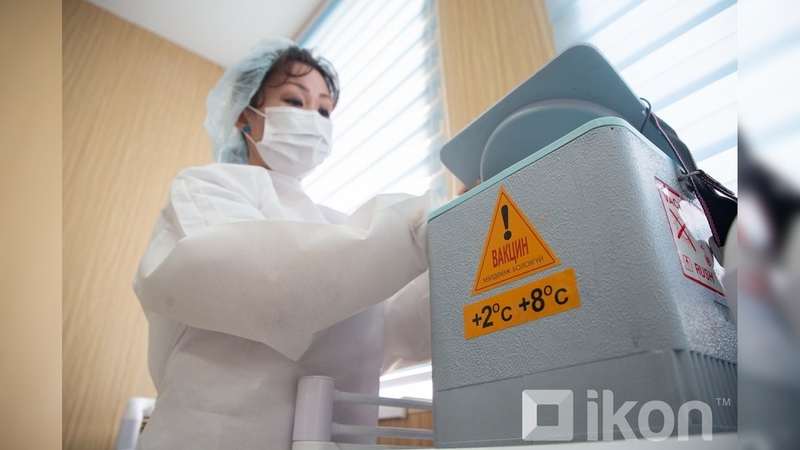
Half percent of capital city citizens fully vaccinated www.montsame.mn
A total of 5,421 citizens were involved in immunization in the capital city yesterday, May 11. More specifically, 3,794 people received their first shots of COVID-19 vaccine while 1,627 people have gotten their second shots.
Since the vaccination rollout launched in February 2021, 94.8 percent of capital city citizens aged over 18 or 903,948 people have had the first dose of vaccine and 50.8 percent or 481,414 people have been fully vaccinated.
At the national level, 1,678,198 people or 81.2 percent have been vaccinated with the first dose of vaccine and 631,666 people or 30.6 percent with the second dose.
- «
- 1
- 2
- 3
- 4
- 5
- 6
- 7
- 8
- 9
- 10
- 11
- 12
- 13
- 14
- 15
- 16
- 17
- 18
- 19
- 20
- 21
- 22
- 23
- 24
- 25
- 26
- 27
- 28
- 29
- 30
- 31
- 32
- 33
- 34
- 35
- 36
- 37
- 38
- 39
- 40
- 41
- 42
- 43
- 44
- 45
- 46
- 47
- 48
- 49
- 50
- 51
- 52
- 53
- 54
- 55
- 56
- 57
- 58
- 59
- 60
- 61
- 62
- 63
- 64
- 65
- 66
- 67
- 68
- 69
- 70
- 71
- 72
- 73
- 74
- 75
- 76
- 77
- 78
- 79
- 80
- 81
- 82
- 83
- 84
- 85
- 86
- 87
- 88
- 89
- 90
- 91
- 92
- 93
- 94
- 95
- 96
- 97
- 98
- 99
- 100
- 101
- 102
- 103
- 104
- 105
- 106
- 107
- 108
- 109
- 110
- 111
- 112
- 113
- 114
- 115
- 116
- 117
- 118
- 119
- 120
- 121
- 122
- 123
- 124
- 125
- 126
- 127
- 128
- 129
- 130
- 131
- 132
- 133
- 134
- 135
- 136
- 137
- 138
- 139
- 140
- 141
- 142
- 143
- 144
- 145
- 146
- 147
- 148
- 149
- 150
- 151
- 152
- 153
- 154
- 155
- 156
- 157
- 158
- 159
- 160
- 161
- 162
- 163
- 164
- 165
- 166
- 167
- 168
- 169
- 170
- 171
- 172
- 173
- 174
- 175
- 176
- 177
- 178
- 179
- 180
- 181
- 182
- 183
- 184
- 185
- 186
- 187
- 188
- 189
- 190
- 191
- 192
- 193
- 194
- 195
- 196
- 197
- 198
- 199
- 200
- 201
- 202
- 203
- 204
- 205
- 206
- 207
- 208
- 209
- 210
- 211
- 212
- 213
- 214
- 215
- 216
- 217
- 218
- 219
- 220
- 221
- 222
- 223
- 224
- 225
- 226
- 227
- 228
- 229
- 230
- 231
- 232
- 233
- 234
- 235
- 236
- 237
- 238
- 239
- 240
- 241
- 242
- 243
- 244
- 245
- 246
- 247
- 248
- 249
- 250
- 251
- 252
- 253
- 254
- 255
- 256
- 257
- 258
- 259
- 260
- 261
- 262
- 263
- 264
- 265
- 266
- 267
- 268
- 269
- 270
- 271
- 272
- 273
- 274
- 275
- 276
- 277
- 278
- 279
- 280
- 281
- 282
- 283
- 284
- 285
- 286
- 287
- 288
- 289
- 290
- 291
- 292
- 293
- 294
- 295
- 296
- 297
- 298
- 299
- 300
- 301
- 302
- 303
- 304
- 305
- 306
- 307
- 308
- 309
- 310
- 311
- 312
- 313
- 314
- 315
- 316
- 317
- 318
- 319
- 320
- 321
- 322
- 323
- 324
- 325
- 326
- 327
- 328
- 329
- 330
- 331
- 332
- 333
- 334
- 335
- 336
- 337
- 338
- 339
- 340
- 341
- 342
- 343
- 344
- 345
- 346
- 347
- 348
- 349
- 350
- 351
- 352
- 353
- 354
- 355
- 356
- 357
- 358
- 359
- 360
- 361
- 362
- 363
- 364
- 365
- 366
- 367
- 368
- 369
- 370
- 371
- 372
- 373
- 374
- 375
- 376
- 377
- 378
- 379
- 380
- 381
- 382
- 383
- 384
- 385
- 386
- 387
- 388
- 389
- 390
- 391
- 392
- 393
- 394
- 395
- 396
- 397
- 398
- 399
- 400
- 401
- 402
- 403
- 404
- 405
- 406
- 407
- 408
- 409
- 410
- 411
- 412
- 413
- 414
- 415
- 416
- 417
- 418
- 419
- 420
- 421
- 422
- 423
- 424
- 425
- 426
- 427
- 428
- 429
- 430
- 431
- 432
- 433
- 434
- 435
- 436
- 437
- 438
- 439
- 440
- 441
- 442
- 443
- 444
- 445
- 446
- 447
- 448
- 449
- 450
- 451
- 452
- 453
- 454
- 455
- 456
- 457
- 458
- 459
- 460
- 461
- 462
- 463
- 464
- 465
- 466
- 467
- 468
- 469
- 470
- 471
- 472
- 473
- 474
- 475
- 476
- 477
- 478
- 479
- 480
- 481
- 482
- 483
- 484
- 485
- 486
- 487
- 488
- 489
- 490
- 491
- 492
- 493
- 494
- 495
- 496
- 497
- 498
- 499
- 500
- 501
- 502
- 503
- 504
- 505
- 506
- 507
- 508
- 509
- 510
- 511
- 512
- 513
- 514
- 515
- 516
- 517
- 518
- 519
- 520
- 521
- 522
- 523
- 524
- 525
- 526
- 527
- 528
- 529
- 530
- 531
- 532
- 533
- 534
- 535
- 536
- 537
- 538
- 539
- 540
- 541
- 542
- 543
- 544
- 545
- 546
- 547
- 548
- 549
- 550
- 551
- 552
- 553
- 554
- 555
- 556
- 557
- 558
- 559
- 560
- 561
- 562
- 563
- 564
- 565
- 566
- 567
- 568
- 569
- 570
- 571
- 572
- 573
- 574
- 575
- 576
- 577
- 578
- 579
- 580
- 581
- 582
- 583
- 584
- 585
- 586
- 587
- 588
- 589
- 590
- 591
- 592
- 593
- 594
- 595
- 596
- 597
- 598
- 599
- 600
- 601
- 602
- 603
- 604
- 605
- 606
- 607
- 608
- 609
- 610
- 611
- 612
- 613
- 614
- 615
- 616
- 617
- 618
- 619
- 620
- 621
- 622
- 623
- 624
- 625
- 626
- 627
- 628
- 629
- 630
- 631
- 632
- 633
- 634
- 635
- 636
- 637
- 638
- 639
- 640
- 641
- 642
- 643
- 644
- 645
- 646
- 647
- 648
- 649
- 650
- 651
- 652
- 653
- 654
- 655
- 656
- 657
- 658
- 659
- 660
- 661
- 662
- 663
- 664
- 665
- 666
- 667
- 668
- 669
- 670
- 671
- 672
- 673
- 674
- 675
- 676
- 677
- 678
- 679
- 680
- 681
- 682
- 683
- 684
- 685
- 686
- 687
- 688
- 689
- 690
- 691
- 692
- 693
- 694
- 695
- 696
- 697
- 698
- 699
- 700
- 701
- 702
- 703
- 704
- 705
- 706
- 707
- 708
- 709
- 710
- 711
- 712
- 713
- 714
- 715
- 716
- 717
- 718
- 719
- 720
- 721
- 722
- 723
- 724
- 725
- 726
- 727
- 728
- 729
- 730
- 731
- 732
- 733
- 734
- 735
- 736
- 737
- 738
- 739
- 740
- 741
- 742
- 743
- 744
- 745
- 746
- 747
- 748
- 749
- 750
- 751
- 752
- 753
- 754
- 755
- 756
- 757
- 758
- 759
- 760
- 761
- 762
- 763
- 764
- 765
- 766
- 767
- 768
- 769
- 770
- 771
- 772
- 773
- 774
- 775
- 776
- 777
- 778
- 779
- 780
- 781
- 782
- 783
- 784
- 785
- 786
- 787
- 788
- 789
- 790
- 791
- 792
- 793
- 794
- 795
- 796
- 797
- 798
- 799
- 800
- 801
- 802
- 803
- 804
- 805
- 806
- 807
- 808
- 809
- 810
- 811
- 812
- 813
- 814
- 815
- 816
- 817
- 818
- 819
- 820
- 821
- 822
- 823
- 824
- 825
- 826
- 827
- 828
- 829
- 830
- 831
- 832
- 833
- 834
- 835
- 836
- 837
- 838
- 839
- 840
- 841
- 842
- 843
- 844
- 845
- 846
- 847
- 848
- 849
- 850
- 851
- 852
- 853
- 854
- 855
- 856
- 857
- 858
- 859
- 860
- 861
- 862
- 863
- 864
- 865
- 866
- 867
- 868
- 869
- 870
- 871
- 872
- 873
- 874
- 875
- 876
- 877
- 878
- 879
- 880
- 881
- 882
- 883
- 884
- 885
- 886
- 887
- 888
- 889
- 890
- 891
- 892
- 893
- 894
- 895
- 896
- 897
- 898
- 899
- 900
- 901
- 902
- 903
- 904
- 905
- 906
- 907
- 908
- 909
- 910
- 911
- 912
- 913
- 914
- 915
- 916
- 917
- 918
- 919
- 920
- 921
- 922
- 923
- 924
- 925
- 926
- 927
- 928
- 929
- 930
- 931
- 932
- 933
- 934
- 935
- 936
- 937
- 938
- 939
- 940
- 941
- 942
- 943
- 944
- 945
- 946
- 947
- 948
- 949
- 950
- 951
- 952
- 953
- 954
- 955
- 956
- 957
- 958
- 959
- 960
- 961
- 962
- 963
- 964
- 965
- 966
- 967
- 968
- 969
- 970
- 971
- 972
- 973
- 974
- 975
- 976
- 977
- 978
- 979
- 980
- 981
- 982
- 983
- 984
- 985
- 986
- 987
- 988
- 989
- 990
- 991
- 992
- 993
- 994
- 995
- 996
- 997
- 998
- 999
- 1000
- 1001
- 1002
- 1003
- 1004
- 1005
- 1006
- 1007
- 1008
- 1009
- 1010
- 1011
- 1012
- 1013
- 1014
- 1015
- 1016
- 1017
- 1018
- 1019
- 1020
- 1021
- 1022
- 1023
- 1024
- 1025
- 1026
- 1027
- 1028
- 1029
- 1030
- 1031
- 1032
- 1033
- 1034
- 1035
- 1036
- 1037
- 1038
- 1039
- 1040
- 1041
- 1042
- 1043
- 1044
- 1045
- 1046
- 1047
- 1048
- 1049
- 1050
- 1051
- 1052
- 1053
- 1054
- 1055
- 1056
- 1057
- 1058
- 1059
- 1060
- 1061
- 1062
- 1063
- 1064
- 1065
- 1066
- 1067
- 1068
- 1069
- 1070
- 1071
- 1072
- 1073
- 1074
- 1075
- 1076
- 1077
- 1078
- 1079
- 1080
- 1081
- 1082
- 1083
- 1084
- 1085
- 1086
- 1087
- 1088
- 1089
- 1090
- 1091
- 1092
- 1093
- 1094
- 1095
- 1096
- 1097
- 1098
- 1099
- 1100
- 1101
- 1102
- 1103
- 1104
- 1105
- 1106
- 1107
- 1108
- 1109
- 1110
- 1111
- 1112
- 1113
- 1114
- 1115
- 1116
- 1117
- 1118
- 1119
- 1120
- 1121
- 1122
- 1123
- 1124
- 1125
- 1126
- 1127
- 1128
- 1129
- 1130
- 1131
- 1132
- 1133
- 1134
- 1135
- 1136
- 1137
- 1138
- 1139
- 1140
- 1141
- 1142
- 1143
- 1144
- 1145
- 1146
- 1147
- 1148
- 1149
- 1150
- 1151
- 1152
- 1153
- 1154
- 1155
- 1156
- 1157
- 1158
- 1159
- 1160
- 1161
- 1162
- 1163
- 1164
- 1165
- 1166
- 1167
- 1168
- 1169
- 1170
- 1171
- 1172
- 1173
- 1174
- 1175
- 1176
- 1177
- 1178
- 1179
- 1180
- 1181
- 1182
- 1183
- 1184
- 1185
- 1186
- 1187
- 1188
- 1189
- 1190
- 1191
- 1192
- 1193
- 1194
- 1195
- 1196
- 1197
- 1198
- 1199
- 1200
- 1201
- 1202
- 1203
- 1204
- 1205
- 1206
- 1207
- 1208
- 1209
- 1210
- 1211
- 1212
- 1213
- 1214
- 1215
- 1216
- 1217
- 1218
- 1219
- 1220
- 1221
- 1222
- 1223
- 1224
- 1225
- 1226
- 1227
- 1228
- 1229
- 1230
- 1231
- 1232
- 1233
- 1234
- 1235
- 1236
- 1237
- 1238
- 1239
- 1240
- 1241
- 1242
- 1243
- 1244
- 1245
- 1246
- 1247
- 1248
- 1249
- 1250
- 1251
- 1252
- 1253
- 1254
- 1255
- 1256
- 1257
- 1258
- 1259
- 1260
- 1261
- 1262
- 1263
- 1264
- 1265
- 1266
- 1267
- 1268
- 1269
- 1270
- 1271
- 1272
- 1273
- 1274
- 1275
- 1276
- 1277
- 1278
- 1279
- 1280
- 1281
- 1282
- 1283
- 1284
- 1285
- 1286
- 1287
- 1288
- 1289
- 1290
- 1291
- 1292
- 1293
- 1294
- 1295
- 1296
- 1297
- 1298
- 1299
- 1300
- 1301
- 1302
- 1303
- 1304
- 1305
- 1306
- 1307
- 1308
- 1309
- 1310
- 1311
- 1312
- 1313
- 1314
- 1315
- 1316
- 1317
- 1318
- 1319
- 1320
- 1321
- 1322
- 1323
- 1324
- 1325
- 1326
- 1327
- 1328
- 1329
- 1330
- 1331
- 1332
- 1333
- 1334
- 1335
- 1336
- 1337
- 1338
- 1339
- 1340
- 1341
- 1342
- 1343
- 1344
- 1345
- 1346
- 1347
- 1348
- 1349
- 1350
- 1351
- 1352
- 1353
- 1354
- 1355
- 1356
- 1357
- 1358
- 1359
- 1360
- 1361
- 1362
- 1363
- 1364
- 1365
- 1366
- 1367
- 1368
- 1369
- 1370
- 1371
- 1372
- 1373
- 1374
- 1375
- 1376
- 1377
- 1378
- 1379
- 1380
- 1381
- 1382
- 1383
- 1384
- 1385
- 1386
- 1387
- 1388
- 1389
- 1390
- 1391
- 1392
- 1393
- 1394
- 1395
- 1396
- 1397
- 1398
- 1399
- 1400
- 1401
- 1402
- 1403
- 1404
- 1405
- 1406
- 1407
- 1408
- 1409
- 1410
- 1411
- 1412
- 1413
- 1414
- 1415
- 1416
- 1417
- 1418
- 1419
- 1420
- 1421
- 1422
- 1423
- 1424
- 1425
- 1426
- 1427
- 1428
- 1429
- 1430
- 1431
- 1432
- 1433
- 1434
- 1435
- 1436
- 1437
- 1438
- 1439
- 1440
- 1441
- 1442
- 1443
- 1444
- 1445
- 1446
- 1447
- 1448
- 1449
- 1450
- 1451
- 1452
- 1453
- 1454
- 1455
- 1456
- 1457
- 1458
- 1459
- 1460
- 1461
- 1462
- 1463
- 1464
- 1465
- 1466
- 1467
- 1468
- 1469
- 1470
- 1471
- 1472
- 1473
- 1474
- 1475
- 1476
- 1477
- 1478
- 1479
- 1480
- 1481
- 1482
- 1483
- 1484
- 1485
- 1486
- 1487
- 1488
- 1489
- 1490
- 1491
- 1492
- 1493
- 1494
- 1495
- 1496
- 1497
- 1498
- 1499
- 1500
- 1501
- 1502
- 1503
- 1504
- 1505
- 1506
- 1507
- 1508
- 1509
- 1510
- 1511
- 1512
- 1513
- 1514
- 1515
- 1516
- 1517
- 1518
- 1519
- 1520
- 1521
- 1522
- 1523
- 1524
- 1525
- 1526
- 1527
- 1528
- 1529
- 1530
- 1531
- 1532
- 1533
- 1534
- 1535
- 1536
- 1537
- 1538
- 1539
- 1540
- 1541
- 1542
- 1543
- 1544
- 1545
- 1546
- 1547
- 1548
- 1549
- 1550
- 1551
- 1552
- 1553
- 1554
- 1555
- 1556
- 1557
- 1558
- 1559
- 1560
- 1561
- 1562
- 1563
- 1564
- 1565
- 1566
- 1567
- 1568
- 1569
- 1570
- 1571
- 1572
- 1573
- 1574
- 1575
- 1576
- 1577
- 1578
- 1579
- 1580
- 1581
- 1582
- 1583
- 1584
- 1585
- 1586
- 1587
- 1588
- 1589
- 1590
- 1591
- 1592
- 1593
- 1594
- 1595
- 1596
- 1597
- 1598
- 1599
- 1600
- 1601
- 1602
- 1603
- 1604
- 1605
- 1606
- 1607
- 1608
- 1609
- 1610
- 1611
- 1612
- 1613
- 1614
- 1615
- 1616
- 1617
- 1618
- 1619
- 1620
- 1621
- 1622
- 1623
- 1624
- 1625
- 1626
- 1627
- 1628
- 1629
- 1630
- 1631
- 1632
- 1633
- 1634
- 1635
- 1636
- 1637
- 1638
- 1639
- 1640
- 1641
- 1642
- 1643
- 1644
- 1645
- 1646
- 1647
- 1648
- 1649
- 1650
- 1651
- 1652
- 1653
- 1654
- 1655
- 1656
- 1657
- 1658
- 1659
- 1660
- 1661
- 1662
- 1663
- 1664
- 1665
- 1666
- 1667
- 1668
- 1669
- 1670
- 1671
- 1672
- 1673
- 1674
- 1675
- 1676
- 1677
- 1678
- 1679
- 1680
- 1681
- 1682
- 1683
- 1684
- 1685
- 1686
- 1687
- 1688
- 1689
- 1690
- 1691
- 1692
- 1693
- 1694
- »






